Kia Picanto: Engine Control System / ETC (Electronic Throttle Control) System
Specifications
Sensor
Item
|
Opening Percentage (%)
|
Output Voltage (V) [Vref = 5V]
|
TPS1
| C.T
| 8.5 - 11.5
| 0.43 - 0.58
|
W.O.T
| 88 - 96
| 4.40 - 4.80
|
TPS2
| C.T
| 88.5 - 91.5
| 4.43 - 4.58
|
W.O.T
| 2 - 10
| 0.10 - 0.50
|
Fail Safe
| Throttle valve stuck at 5°
|
Supply Voltage (V)
| 4.8 - 5.2
|
Type
| Hall IC Non-contact sensor [Integrated into ETC Module]
|
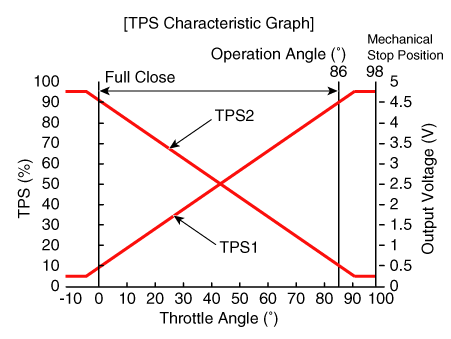
Motor
Item
|
Specification
|
Coil Resistance (Ω)
| 0.3 - 100 [20°C(68°F)]
|
Maximum Allowable Current (A)
| < 10.0
|
Type
| DC Motor [Integrated into ETC Module]
|
Description and operation
The
Electronic Throttle Control (ETC) System consists of a throttle body
with an integrated control motor and throttle position sensor (TPS).
Instead of the traditional throttle cable, an Accelerator Position
Sensor (APS) is used to receive driver input. The ECM uses the APS
signal to calculate the target throttle angle; the position of the
throttle is then adjusted via ECM control of the ETC motor. The TPS
signal is used to provide feedback regarding throttle position to the
ECM. Using ETC, precise control over throttle position is possible; the
need for external cruise control modules/cables is eliminated.
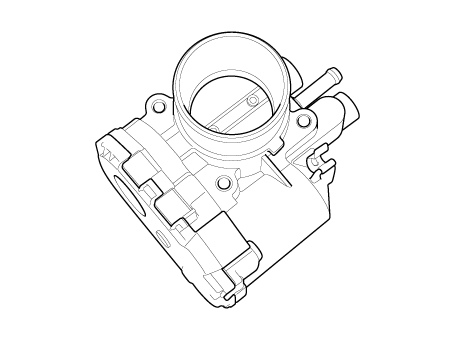
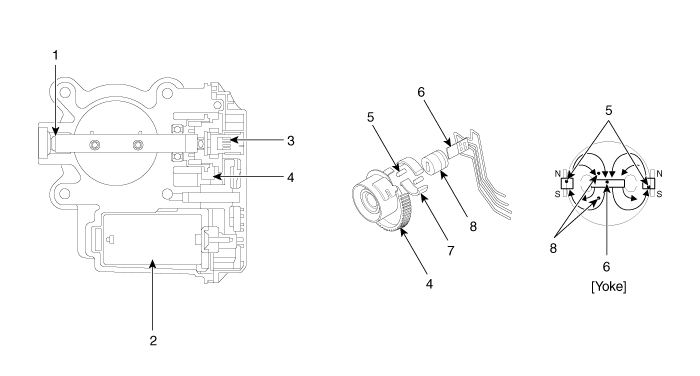
1. Dry bearing
2. DC motor
3. Non-contact hall sensor
4. Gear
| 5. Magnet
6. Hall IC
7. Yoke
8. Stator
|
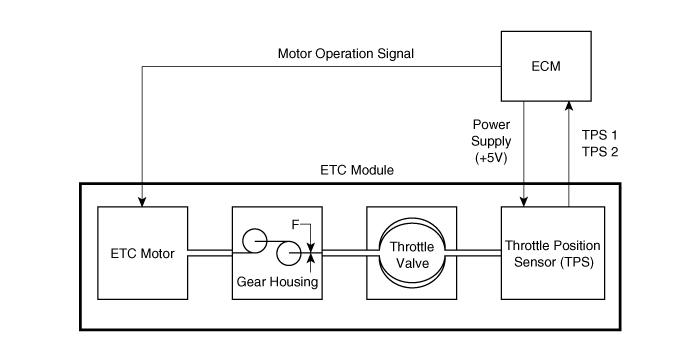
Schematic diagrams
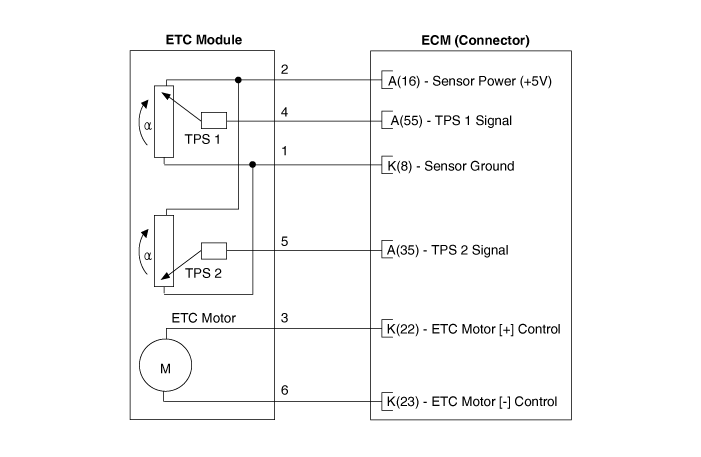
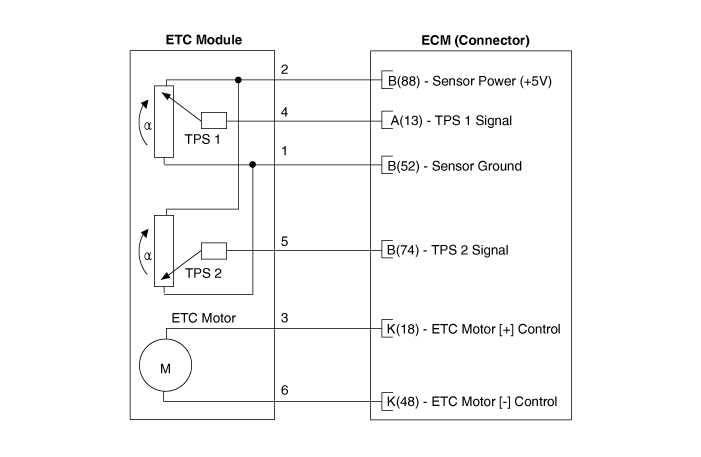
Repair procedures
Throttle Position Sensor (TPS)
| 1. | Connect the KDS on the Data Link Connector (DLC). |
| 2. | Start the engine and measure the output voltage of TPS 1 and 2 at C.T. and W.O.T.
Item
|
Opening Percentage (%)
|
Output Voltage (V) [Vref = 5V]
| TPS1
| C.T
| 8.5 - 11.5
| 0.43 - 0.58
| W.O.T
| 88 - 96
| 4.40 - 4.80
| TPS2
| C.T
| 88.5 - 91.5
| 4.43 - 4.58
| W.O.T
| 2 - 10
| 0.10 - 0.50
|
|
ETC Motor
| 1. | Turn the ignition switch OFF. |
| 2. | Disconnect the ETC module connector. |
| 3. | Measure resistance between the ETC module terminals 1 and 2. |
| 4. | Check that the resistance is within the specification.
Specification : 0.3 - 100 Ω [20°C(68°F)] |
|
| 1. | Turn the ignition switch OFF and disconnect the battery negative (-) terminal. |
| 2. | Remove the air cleaner.
(Refer to Engine Mechanical System - “Air Cleaner”)
|
| 3. | Disconnect the ETC module connector (A). |
| 4. | Remove the installation bolts (B) and then remove the ETC module from the engine.
Electronic Throttle Control module mounting bolt :
9.8 - 11.8 N·m (1.0 - 1.2 kgf·m, 7.2 - 8.7 lb·ft) |
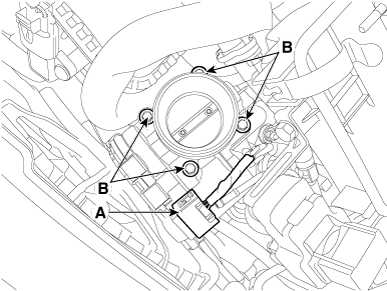 |
| 1. | Remove the ETC Module.
(Refer to Engine Control System - "ETC System")
|
| 2. | Keep the ETC module plate (A) open.
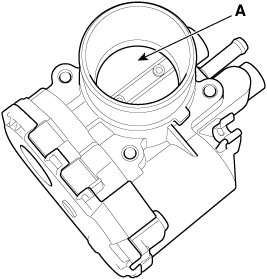 |
| 3. | Clean the pollutant in the throttle body using a soft cloth moistened with clearning fluid.
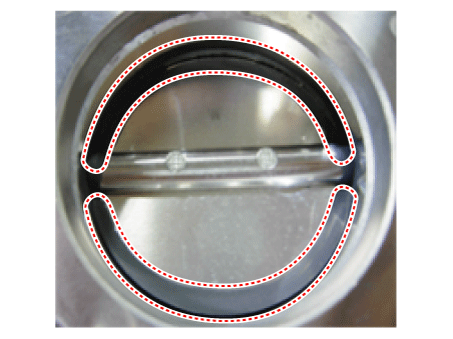 | •
| Do not directly spray cleaning fluid to ETC module. Instead, use a lint free cloth moistened with cleaning fluid. |
| •
| Be
careful not to remove the coating fluid around the shaft. If coating
fluid is removed, idling control failure may occur due to inflow of
foreign substances or excessive air leakage. |
|
|
| 4. | After cleaning, reinstall the ETC module and then perform the ETC module learning procedure.
(Refer to Engine Control System - "ETC System" - Adjustment)
|
| •
| Install the component to the specified torques. |
| •
| Note that internal damage may occur when the component is dropped. If the component has been dropped, inspect before installing. |
| •
| When cleaning the throttle body, clean the valve and carbon at the bore using a cloth moistened with cleaner. |
| •
| Do not spray the engine cleaner on the throttle body. |
| •
| Be careful as fingers or cloth may get caught in the valve. |
| •
| When installing the throttle body, keep foreign materials away from the throttle body. |
| •
| Fill with engine coolant.
(Refer to Engine Mechanical System - "Coolant")
|
|
| 1. | Install in the reverse order of removal. |
| ETC module learning procedure |
Be sure to perform the ETC module learning procedure when replacing or reinstalling the ETC module.
| 1. | Wait for 1 minute with the ignition switch ON. |
| 2. | Start the engine and keep it idle for 15 minutes. |
| 3. | Waif for 1 minute with the ignition switch OFF. |
| 4. | Restart the engine, and check that the idle speed is stable. If
the ETC module learning procedure is not performed after replacing or
reinstalling the ETC module, MIL illumination with DTCs may occur. |
|
Troubleshooting
Item
|
Fail-Safe
|
ETC Motor
| Throttle valve stuck at 5°
|
TPS
| TPS 1 fault
| ECM looks at TPS2
|
TPS 2 fault
| ECM looks at TPS1
|
TPS 1,2 fault
| Throttle valve stuck at 5°
|
APS
| APS 1 fault
| ECM looks at APS 2
|
APS 2 fault
| ECM looks at APS 1
|
APS 1,2 fault
| Engine idle state
|
When
throttle value is stuck at 5°, engine speed will be limited to below
1,500 rpm and vehicle speed at maximum 40 - 50 km/h (25-31 mph). |
Schematic diagrams
ECM Terminal and Input/Output signal [M/T]
1. Harness Connector
2. Terminal Function [M/T]
[Connector A]
Pin No
...
Specifications
Specification
Pressure
[kPa (kgf/cm², psi)]
Output Voltage (V) [Vref=5V]
32.5 ( ...
Other information:
General market
Maintenance Under Severe Usage Conditions
- For Gasoline Engine [Except Europe (Including Russia)]
MAINTENANCE ITEM
MAINTENANCE
OPERATION
MAINTENANCE ...
A : Outside air
B : Recirculated air
C : Climate control air filter
D : Blower
E : Evaporator core
F : Heater core
The climate control air filter installed
behind the glove box filters the dust or
other pollutants that come into the vehicle
from the outside through the
heating a ...






 Engine Control Module (ECM)
Engine Control Module (ECM) Manifold Absolute Pressure Sensor (MAPS)
Manifold Absolute Pressure Sensor (MAPS)




